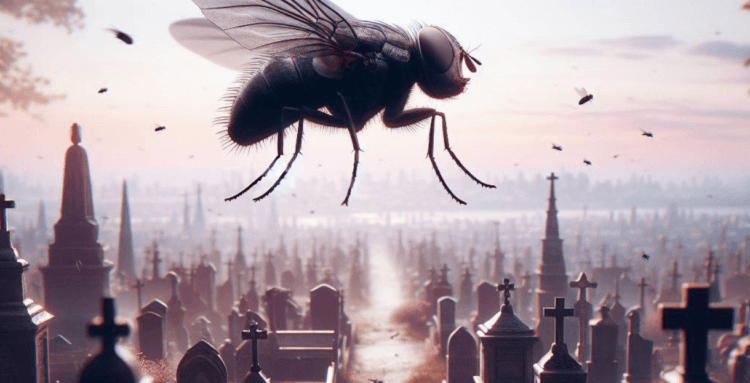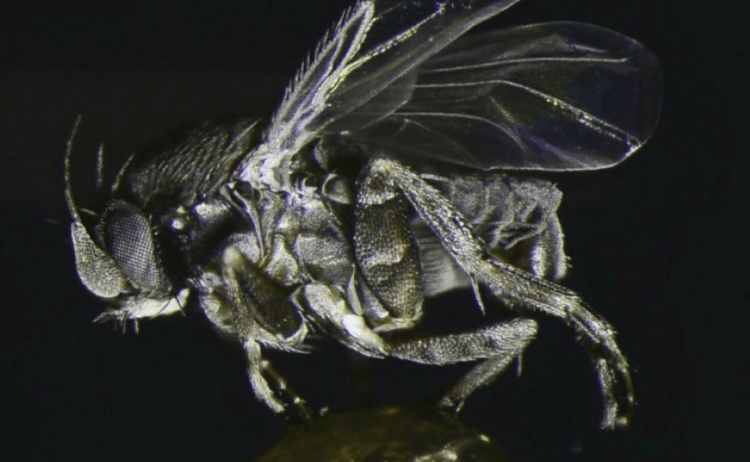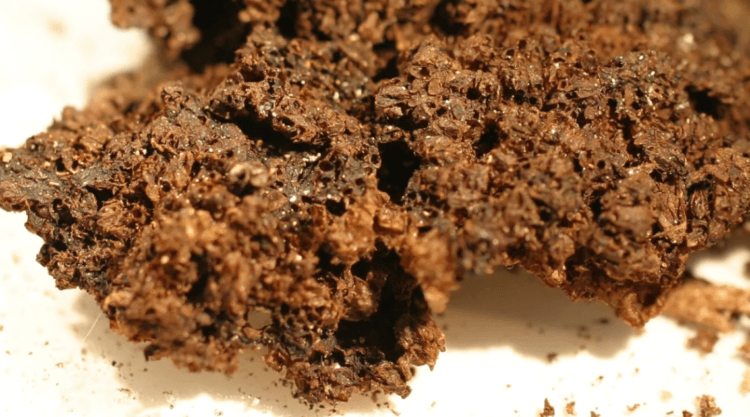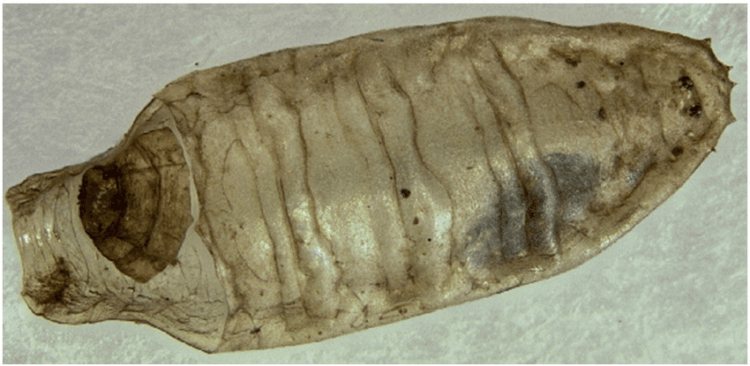Necrophages are all kinds of organisms that share a food source — obtain nutrients from decaying biomass, such as the carcasses of dead animals or even human remains. Usually they find food for themselves on the surface of the earth, but there are also those who are ready to dig the earth to great depths. We are talking about the grave fly, or Conicera tibialis, which is also a necrophage. Recently, scientists were surprised to discover that this insect penetrates graves and lays eggs there. As a matter of fact, it was not for nothing that the fly was called the “grave fly.” Her remains were even discovered in Roman burial grounds. However, the ability of the insect to dig holes to such great depths was a surprise to scientists.

Grave flies can penetrate graves up to two meters deep
How flies find corpses
If a corpse ends up in an open area, the same organisms always appear on it over time, regardless of where and in what area it is located. Of the insects, the first to appear on a corpse are usually Calliphoridae flies, which are distributed throughout the world. Then other types of flies gradually appear, including those that we can find at home, since they are also necrophages. Following the flies, beetles and even some moths appear.
But why are coffin flies always the first insect to fly to a corpse? As scientists explain, it's all about their sense of smell. According to Dr Eric McAllister, an employee of the Natural History Museum in London, a fly can smell a corpse up to seven kilometers away. The latest data suggests that flies are able to smell a corpse, even if it is buried to a depth of at least two meters, as reported by IftScience. Previously, it was believed that the bodies of people who were deeply buried, and even in coffins, were reliably protected from insects, at least flying ones.

Grave fly (Conicera tibialis). Photo source: nhm.org
Why do flies get into graves
Adult flies themselves are not as voracious as they might seem at first glance. They do not often eat corpses, although they may do so. Insects prefer highly decomposed substrates, such as excrement. But the main task of adult individuals is not feeding, but reproduction. The larvae take over the feeding.
Therefore, the task of adult females is to become fertilized and lay eggs in a favorable environment where the larva can get enough food. For example, human corpses are an excellent place for coffin fly larvae. Therefore, an adult female can dig to incredible depths for her size. For example, for a person this depth is equivalent to about three kilometers.

Scientists learned relatively recently that grave flies have this ability, and it can be said by accident. When the bodies of people buried 18 years ago were exhumed in Spain, traces of grave flies were found on the remains. Presumably, they can grow and reproduce in coffins for many generations. The researchers came to this conclusion because they found both fly larvae and an adult living individual in the coffins. Also, the conclusions drawn were confirmed by some experiments, which were, of course, not carried out on human remains.
Do flies really know how to dig giant holes?
Not all experts agree that the fly really capable of digging holes to such great depths. It is possible that the female fly enters the coffin even before burial. After all, a small fly is difficult to notice – it will not necessarily be in plain sight; instead, it can hide, for example, in the clothes of the deceased.

Puparia of the grave fly Conicera tibialis. Photo source: www.researchgate.net
In addition, there is no convincing evidence that the coffin remains alive for 18 years. It is quite possible that the puparia (fly pupae) were in the coffin for many years, and in the air, when the bodies were exhumed, flies began to appear from them. You also need to make sure that flies do not simply flock to the exhumed remains.
Don't forget to subscribe to our Zen and Telegram channels so you don't miss the most interesting and incredible scientific discoveries!
But, be that as it may, flies are not the nicest and cleanest insects. Therefore, many people often have a question: is it possible to eat foods that flies have sat on? We have already answered it previously, so you can get detailed information by following the link.